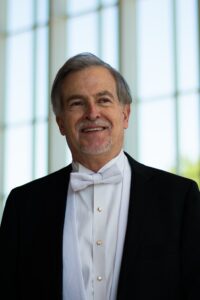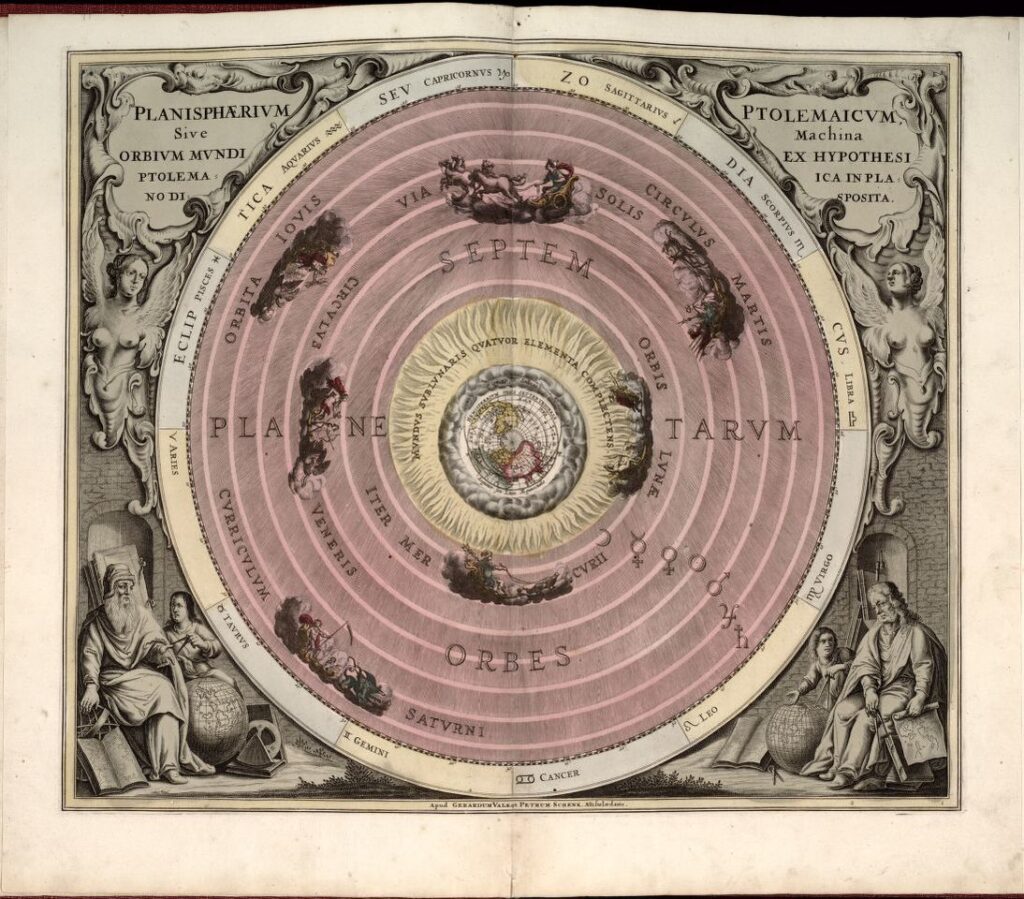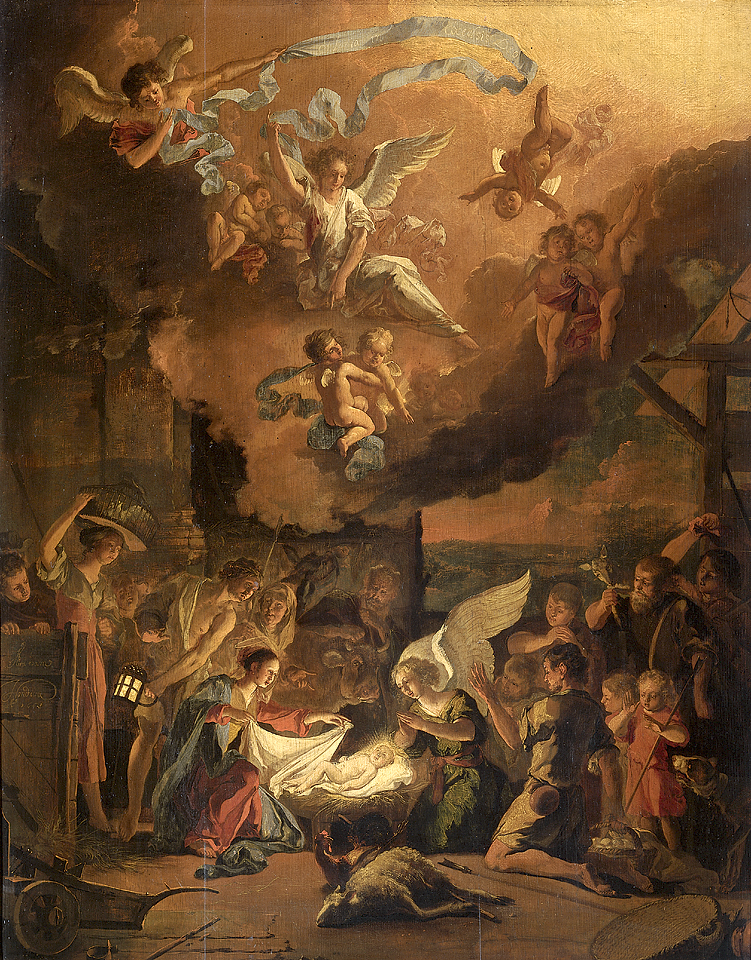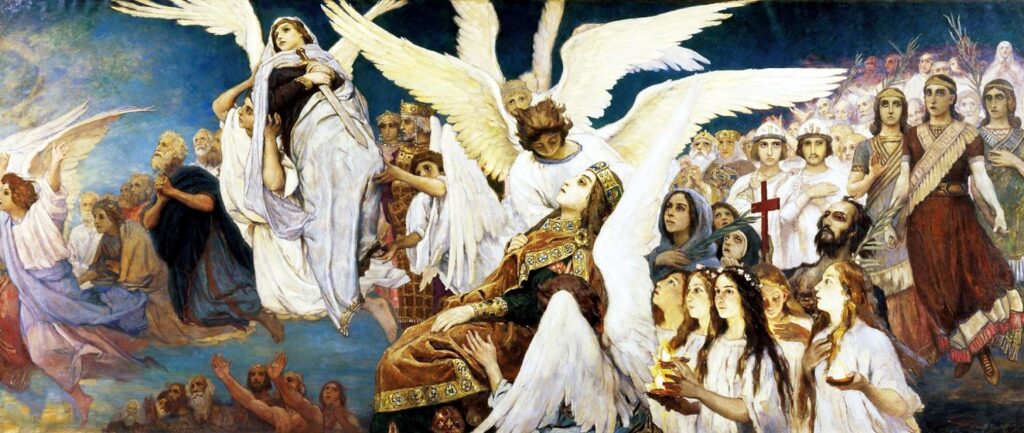Table of Contents

A Rich Vein of Influence
The “Z” stands for “Zane.” Just in case you’re wondering.
Now that we have that out of the way we can get to the real stuff, notably the great compositional heritage embodied in the work of this very-active American composer. A look at his teachers and their teachers and their teachers shows a line going all the way back to the great French composer Gabriel Fauré, who lived from the mid-1800’s until the 1920’s and who in turn had been taught by none other than Camille Saint-Saëns. Wow. Ancestry.com should do a family tree on this.
Fauré had a long and varied career as a performer, composer, and teacher. The next step on the ladder of Stroope’s influences came from Fauré’s student Nadia Boulanger. It’s fair to say that while no one today is going to program a concert featuring her own works, she has permeated American music to a surprising degree, with pupils including Aaron Copland, Virgil Thompson, Quincy Jones and Burt Bacharach. Two pupils relevant to Stroope were Cecil Effinger and Normand Lockwood, both of whom became Stroope’s teachers and mentors.
As with all of us who aren’t hermits, though, there were all kinds of people who gave Stroope opportunities along the way. He tells a story about starting to get his music published in 1983 when he was a high school music teacher. Someone manning a publisher’s table at a convention asked him what he did and whether or not he was composing anything. As Stroope says, “He had an interest in me as I was walking down the aisle at the exhibits, because he had no one else at the booth and I probably looked lonely.” He says in this same context, “I have a long lineage of people who just went out of their way to have an interest in me . . . I’ve always had somebody that was pivotal.” So true for anyone’s success!
One of Stroope’s most widely-performed pieces is Hodie, a 15-minute choral work that includes brass and percussion, originally published in 1991. But in 2019 Stroope released a new edition:
This is a completely revised version of the popular HODIE (This Day) that was published years ago, with brand new first movement and largely re-written second and third movement with new material. This 14:30 work can be performed at any time during the year. Randall has written the instrumentation to balance the voices, even for a smaller vocal ensemble.1
It’s important to point out that no one made Stroope put in the work to do this revision, and the piece had remained popular in its original form. I personally have very warm feelings about the original version, as I sang it in the Christmas concert of my first season with the Cherry Creek Chorale here in the Denver area. Part I had shifting meters, a section in “quick-moving 7/8 time . . . where they enter on beat seven a lot. That pick-up requires a lot of practice.” Um, yes. Very much the case, Dr. Stroope! I think we did okay, but, as the composer says, “There have been many less-than-successful performances of movement one as a result of that.”2 Perhaps these missteps were part of the impetus for the rewrite.
In any case, this new version is really great, and I hope to get a chance someday to sing it. Keep reading for commentary on the texts.
Part I: “Ring Out”

Ring out, you crystal spheres!
Bless at once our human ears,
Tinniant argent’ae, And let your silver chime
[Ring, silver]
Concinant numerose, Move in melodious time,
[Sing together harmoniously]
And with your ninefold harmony,
The consort of the angelic symphony,
Sun and moon, planets all.
Hodie!
Paraphrased/adapted from John Milton, “On the Morning of Christ’s Nativity” 1629
Latin lines substituted by Randall Stroope for Milton’s wording
literal translation in brackets by Debi Simons
It’s probably a good thing that Stroope used only seven lines from Milton’s poem, as that small portion of a much-longer work (almost 250 lines) has so much meaning to explore. Milton was only 21 years old when he wrote this very ambitious poem and perhaps got a little carried away with his own eloquence. If you’re interested in such things, here’s a link to the entire poem. You’ll note that Milton goes into great detail about all the pagan gods whom Christ is replacing by his birth.
Let’s start with the “crystal spheres” that are urged to “ring out” in the first line. To our modern ears it sounds like this is some sort of bell being rung to celebrate Christmas, but the real meaning is very different. On a purely factual basis, if you tried to strike or ring something made of crystal you’d end up with broken glass fragments. So what’s going on here? Well, it’s complicated—and it has nothing to do with bell ringing.
While Milton wrote his poem well after the discoveries of the astronomers Copernicus and Kepler who formulated the heliocentric model of the solar system, he used the imagery of Aristotle and other ancient writers who saw the earth as the center of the universe. Johannes Kepler had published his second major work, Harmonice Mundi (“Harmonies of the World”) in 1619, so Milton had had a decade to absorb the new astronomical models that were being put about. But—and this is difficult for us moderns to understand—there wasn’t an immediate and wholesale rejection of the ancient ideas about the cosmos by these pioneering scientists. “For Kepler, the heavens literally made harmonies through their movements. He was not afraid to attribute qualities to these harmonies and order that would strike us today as strange superstitions.”3
The “music of the spheres” was said to be the sound that the heavenly bodies made as they rotated around the earth, being carried along their respective orbits while embedded on the inner surfaces of nesting crystalline hollow spheres. The outermost sphere contained the stars. I always think of a glass harmonica when I imagine this concept—a faint, unearthly sound caused by vibrations. (All sounds are produced by vibrations if you want to get picky about it.) Milton would have seen nothing incongruous about using ancient imagery in his poem about the coming of Christ. What he’s really saying is something along the lines of, “Let all the heavens rejoice and sing at this fulfillment of God’s promises concerning a Savior.”
I was irresistibly reminded of a familiar hymn which uses this same imagery:
This is my Father’s world,
And to my listening ears
All nature sings, and round me rings
The music of the spheres.
Maltbie Davenport Babcock (1858-1901)
as adapted for hymnal use
Note that this music is available only to “listening ears.” If you’re not paying attention, if you don’t have any interest in the spiritual, then you won’t hear it: your “human ears” won’t be blessed. Shakespeare refers to this concept in these lines from The Merchant of Venice: “Such harmony is in immortal souls; but whilst this muddy vesture of decay doth grossly close it in, we cannot hear it.”
We’re now ready to move on to the third line! Such progress. And here Stroope has taken Milton’s English lines and translated them into Latin. Why he did that I don’t know; perhaps a nod to the ancient origins of the ideas? No clue. And why does Milton say that the “chime,” or sound, of the spheres is “silver”? Here I can speculate a bit more confidently, as we do think of Christmas bells as being jingly, or tinkly, or silvery. (But Milton certainly didn’t know about jingle bells.) A golden chime would be more mellow, don’t you think? If you look up the various materials associated with the heavenly bodies, the moon’s identifying metal is silver. And the angels appeared at night to the shepherds, even though the poem is titled “On the Morning of Christ’s Nativity.” Maybe Milton’s word choice came down to how many syllables he needed to fill out the meter. Beyond that I cannot go.
The next line has the idea of “harmony” or “melody.” Here’s another concept that sounds foreign to our modern minds: the union of music and astronomy. Remember, Kepler’s second book referenced above has the word “harmonies” in the title. He was trying to convey “the true nature of the cosmos as it relates to musical sound.” (Wikipedia) The ancient Greek philosopher and mathematician Pythagoras had discovered how the lengths of vibrating strings affected pitch, and the same concept was seen in the orbits of the spheres.
And so all of this works together to produce a “ninefold harmony.” This has to be a reference to the nine planets, right? But of course that’s not true. Only five other planets besides Earth were known at the time: Mercury, Venus, Mars, Saturn and Jupiter. These plus the sun and the moon made up the seven inner celestial spheres, plus the outer one that held the stars. So to what or whom does the number nine refer?
The following line tells us: it’s the angels. According to a 5th-century work of mysticism, there are three classes of angels with three divisions within each one: “First –Seraphim, Cherubim and Thrones; Middle- – Dominions, Virtues and Powers; Last — Principalities, Archangels and Angels.”4 How seriously did Milton himself take these ideas? It’s fair to point out that they’re not actually spelled out in Scripture anywhere. My view is that he just thought it was a cool image and a readily-recognizable idea to his contemporaries. They’d know what he was talking about and go with the flow. It’s a lot like (again, in my opinion) someone saying today, “We traveled to the four corners of the earth on our vacation.” Everyone knows that the globe doesn’t have corners; you’re just saying that you covered a lot of ground on your trip. So it probably was with Milton and angelology.
The angels are singing in “consort” (which is just an archaic name for a group of musicians performing together—a “concert”–and isn’t being used here to denote some kind of romantic partner). In early cosmic models, each planet or other heavenly body was being pushed along by its own assigned angel, or “mover,” with God being the Prime Mover, the one who had an effect on all other parts without being in any way influenced himself. Here’s another quotation from Shakespeare which refers to this idea:
There’s not the smallest orb which thou behold’st
But in his motion like an angel sings,
Still quiring to the young-eyed cherubins . . .
William Shakespeare, The Merchant of Venice
This movement of Hodie therefore ends with the concept of the entire universe performing a symphony of praise and wonder over the birth of Christ on “this day.”
My preference when including videos for the pieces I discuss is for live concert performances. Alas, this piece is so new that there aren’t any—all concert videos are of the previous edition of the work. But the following video is almost a good as an actual live performance in that it follows along with the sheet music:
Part II: “Hodie Christus Natus Est”

Hodie Christus natus est: This day Christ is born:
Hodie Salvator Apparuit, This day a Saviour has appeared
Hodie in terra canunt angeli, This day to the earth the angels sing,
Laetantur archangeli The archangels rejoice.
Rev. trans. by Debi Simons
Antiphon originally at the end of the Lauds service for Christmas day.
Here’s the central text of Stroope’s three-part work, with the title of the piece as a whole repeated at the beginning of the first three lines: “This day.” Ever thought about why there’s such an emphasis on which day Christ was born? Does it matter? Well, the angel who announced the birth of Christ to the shepherds seemed to think so: “For unto you is born this day in the city of David a Saviour, which is Christ the Lord.” Endless oceans of scholarly ink have been spent in writing about the possible date of this event, which I myself find to be fascinating—but perhaps not relevant to this discussion.
Since the angel is talking to the shepherds, a bit of context about them is valuable here. Here’s the angel’s folllowup announcement to them from Luke’s Gospel: “And this shall be a sign unto you; Ye shall find the babe wrapped in swaddling clothes, lying in a manger.” I can’t tell you how many times I’ve heard/read/recited those verses, and it never struck me before that the angel takes it for granted that the shepherds are going to go check out his (?—angels don’t really have gender) story. He (we’ll say) not only tells the shepherds about the birth but how to locate this miraculous child: “Ye shall find the babe . . .” In other words, the angel assumes that the shepherds are going to leave their sheep behind in the fields and check out his story, which they promptly do: “Let us now go even unto Bethlehem, and see this thing which is come to pass, which the Lord hath made known unto us. And they came with haste, and found Mary, and Joseph, and the babe lying in a manger.”
The angel characterizes the miraculous child with two nouns: “Christ” and “Saviour.” “Christ” comes from the Greek word χριστός (chrīstós), meaning “anointed one.” The idea of pouring or rubbing some type of sacred/fragrant oil on a special person is pretty foreign to us but was very common in ancient cultures. People who were anointed included kings, prophets, priests, and the dead. Every single one of those roles can be assigned to the person of Jesus Christ according to Christian doctrine. “Saviour” (or “Savior” in American spelling) is pretty self-explanatory; in this context the reference is to spiritual salvation: “he shall save his people from their sins.”
The text then goes on to say that the angels are singing to the earth and that the archangels are rejoicing. (The standard translation says “on the earth,” but that wording doesn’t make sense—they stay up in the sky.) It’s hard to know why the general category of “angels” is then further delineated by the term “archangels.” This text is very old and has gone through numerous iterations over the centuries. I will venture a guess, though, that the word “angels” is being used in its simple meaning of “messenger,” while the term “archangels” is referencing the idea that there are ranks within the heavenly hosts. As I mentioned in the previous section, there aren’t hard and fast descriptions in Scripture of how the angels are organized. The word “archangel” does indeed appear, though, and in connection with the named beings Michael and Gabriel. So here’s another of my paraphrases: “All of the angels are singing, and the rejoicing reaches even to the top rank of archangel.”
A couple of etymological notes here before the performance video: “Hodie” is almost certainly formed from the two Latin words “hoc” (“this”) and “die” (“day”). The word “antiphon” refers to multiple choirs singing for a Roman Catholic mass. They’d sometimes trade verses and refrains back and forth between or among them, thus producing an “antiphonal” effect. The “lauds” service in the canonical hours is early in the morning and means “praise.” Here you can imagine this special Christmas mass being celebrated at sunrise. The new day, this day, has arrived.
Here’s Part II, again with the sheet music:
Part III: “Alleluia!“

Alleluia! Hodie exultant justi, dicentes! Alleluia! Today, the righteous rejoice, saying,
Gloria in excelsis Deo! Glory to God in the highest!
Traditional text
“Wake, awake for night is flying.”
All the watchers on the heights are crying:
“Awake, Jerusalem, arise!”
Philip Nicolai (originally in German/trans. by Catherine Winkworth)
This third and final section continues the text from Part II, with additional lines from a German hymn. The shout of praise “alleluia” is used to great effect by Stroope; here’s a good definition from Wikipedia:
“Hallelujah” [or, in the above version, “alleluia”] is a transliteration of the Hebrew phrase הַלְלוּ יָהּ (halelū yāh), which means “praise ye Jah!” (from הַלְלוּ, “praise ye!” and יָהּ, “Jah”.) The word “hallel” in Hebrew means a joyous praise in song. The second part, “Yah,” is a shortened form of YHWH (“Yahweh” or “Jehovah” in modern English).
The text then quotes from Psalm 33:1: “Rejoice in the Lord, O ye righteous: for praise is comely for the upright.” One might ask, “I thought the angel’s message was that a ‘savior’ had been born. Why would righteous people need a savior?” The ending verse of the psalm answers that question: “ Let thy mercy, O Lord, be upon us, according as we hope in thee.” The righteous, then, are those who have accepted the gift of God’s mercy. And the praise of the righteous echoes that of the heavenly host that sang to the shepherds: “Glory to God in the highest.” Which raises the question:
Glory to God in the highest what?
Other translations often include the word “heaven,” so the meaning becomes something like, “Let God’s glory be known in the highest heaven.” That makes a certain amount of sense, I guess, but logically speaking the highest heaven would be the one place where His glory would already be known, wouldn’t it? Trying to figure out what this six-word phrase literally means has resulted in one of the few, if not the only, times I’ve wished I knew Greek. However, one can always consult the experts, and Matthew Henry’s classic commentary makes a good point: “Other works of God are for his glory, but the redemption of the world is for his glory in the highest.” So perhaps a better way to put it would be: “Glory to God in/to the highest degree possible.”
Stroope ends the work in a way that Johan Sebastian Bach would have approved, with a chorale or hymn. Indeed, Stroope uses a verse from a hymn that Bach himself used, usually titled in English as “Sleepers, Wake.” It may interest you to know that the original hymn by Philip Nicolai has nothing to do with the original Christmas story at all, but with a parable Jesus told about the necessity of being ready for the second coming of Christ and his kingdom, usually called the “parable of the ten wise and the ten foolish virgins.” It’s a fascinating parable; if you’re interested you can read the passage in a lovely modern translation here.
Stroope obviously saw this text as being perfectly in line with the idea of the angels’ announcement about Christ’s first coming. I love that imagery of the watchers crying out to wake everyone up, don’t you? “Jerusalem” can refer to the literal city, or to Israel as a whole, or to all those who believe in the God of the Bible and his promises. This third meaning seems appropriate here.
And with that Stroope’s work ends. Here’s Part III, again with the sheet music follow-along:
And now here’s the entire work, with some sheet music follow-along and some striking accompanying images:
Notes on Sources
1Description from the composer’s website: https://www.zrstroope.com/music/hodie-this-day/
2The quotations by Stroope in this section are taken from the doctoral dissertation THE LIFE AND CAREER OF Z. RANDALL STROOPE:
WITH A SPECIAL FOCUS ON HODIE by Matthew P. Hill, DMA, University of Nebraska, 2019, and included here under fair use guidelines. If you are a member of a qualifying organization and would like to read the dissertation and/or the interview as a whole, you can follow this link for information on obtaining access to the entire document: https://www.proquest.com/docview/2217770599
3”Whose Revolution? Copernicus, Brahe & Kepler”
4Quoted in “The Celestial Hierarchy of Pseudo-Dionysius the Areopagite”

